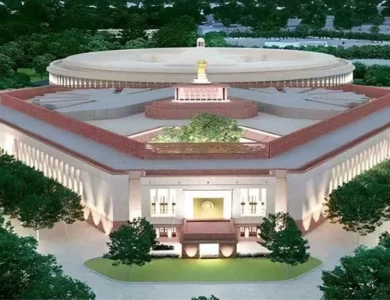Visa-On-Arrival for Nationals from Japan, South Korea, and UAE Now Available in India

Exciting news for travelers! Citizens of Japan, South Korea, and the UAE can now avail themselves of a visa-on-arrival facility when visiting India for tourism, business, conferences, and medical purposes. This visa allows a stay of up to 60 days with the convenience of double entry. However, this facility is only available at six specific airports: Bangalore, Chennai, Delhi, Hyderabad, Kolkata, and Mumbai, as announced by the Ministry of Tourism.
Understanding Visa-On-Arrival
A visa-on-arrival is a type of visa issued to foreign nationals upon their arrival in a country. Travelers apply for this visa at the airport and must present the required documentation as specified by immigration authorities.
What is an E-Visa?
In addition to the visa-on-arrival, India offers an e-visa facility that includes an Electronic Travel Authorization (ETA). This service is extended to nationals from 167 countries, allowing entry through 30 designated international airports and six major seaports. Similar to the visa-on-arrival, the e-visa covers tourism, business, conferences, and medical purposes, with a validity of up to 60 days and double entry.
Safety Measures for Tourists
To enhance tourist safety and convenience, 15 state governments and Union Territory (UT) administrations in India have deployed tourist police forces. Additionally, the Ministry of Tourism operates a 24×7 Multi-Lingual Tourist Info-Helpline. This toll-free service (1800111363 or short code 1363) offers guidance and information in 12 languages, including 10 international ones, to assist both domestic and foreign tourists.
The Swadesh Darshan Scheme
Launched in 2014-15, the Swadesh Darshan scheme aims to develop tourism infrastructure across India. Under this initiative, the government provides financial support to states, UT administrations, and central agencies. Since its inception, 76 projects have been sanctioned under various thematic circuits with a total funding of Rs 5,287 crore, of which Rs 4,944 crore has already been released.
Swadesh Darshan 2.0: What’s New?
The Swadesh Darshan scheme has been updated to Swadesh Darshan 2.0 (SD2.0), focusing on sustainable and responsible tourism destinations. This new approach prioritizes the needs of both tourists and destinations, aiming to create high-value, competitive, and sustainable tourism circuits.
Key Features of Swadesh Darshan 2.0
- Focus on Domestic Tourism: Encouraging local travel to support domestic tourism.
- Integration with Other Schemes: Aligning with initiatives like Swachh Bharat Abhiyan, Skill India, and Make in India to enhance tourism’s impact on job creation and economic growth.
- Sustainable and Responsible Tourism: Ensuring eco-friendly and sustainable tourism development.
- Destination-Centric Approach: Developing each destination to offer unique and fulfilling experiences.
Understanding Tourist Circuits
A tourist circuit is a route that includes at least three major tourist destinations that are not in the same town, village, or city and are not too far apart. These circuits have well-defined entry and exit points, encouraging tourists to visit multiple locations within the circuit.
Theme-Based Tourist Circuits
Theme-based circuits focus on specific themes such as religion, culture, ethnicity, and niche interests. These circuits can be within a single state or span multiple states and Union Territories. Theme-Based Circuits
- Buddha Circuit: Pilgrimage destinations in Madhya Pradesh, Bihar, Uttar Pradesh, Gujarat, and Andhra Pradesh.
- North-East Circuit: Developing tourism in Arunachal Pradesh, Assam, Manipur, Meghalaya, Mizoram, Nagaland, Tripura, and Sikkim.
- Himalayan Circuit: Celebrating the Himalayan region in Jammu & Kashmir, Himachal Pradesh, Uttarakhand, and the North-East.
- Sufi Circuit: Exploring the Sufi tradition across India.
- Krishna Circuit: Dedicated to places associated with Lord Krishna in Haryana and Rajasthan.
- Tirthankar Circuit: Highlighting Jain shrines across India.
- Wildlife Circuit: Promoting wildlife tourism in Assam and Madhya Pradesh.
- Tribal Circuit: Offering insights into tribal cultures in Chhattisgarh, Nagaland, and Telangana
- Ramayana Circuit: Focusing on locations related to Lord Rama, primarily in Uttar Pradesh.
- Rural Circuit: Enhancing rural tourism to showcase the true India, including circuits like Malanad Malabar Cruise Tourism and Bihar Gandhi Circuit.
- Spiritual Circuit: Catering to spiritual tourists with destinations in Kerala, Uttar Pradesh, Maharashtra, Manipur, Bihar, Rajasthan, and Puducherry.
- Coastal Circuit: Focusing on India’s coastline, including Gujarat, Maharashtra, Goa, Kerala, Karnataka, Tamil Nadu, Andhra Pradesh, Odisha, and West Bengal.
- Desert Circuit: Highlighting the deserts of Thar, Kutch, Ladakh, and Himachal.
- Eco Circuit: Promoting eco-friendly tourism in Kerala, Uttarakhand, Madhya Pradesh, Telangana, Mizoram, and Jharkhand.
- Heritage Circuit: Showcasing India’s rich heritage sites in Rajasthan, Assam, Uttar Pradesh, Gujarat, Puducherry, Punjab, Uttarakhand, Madhya Pradesh, and Telangana.







